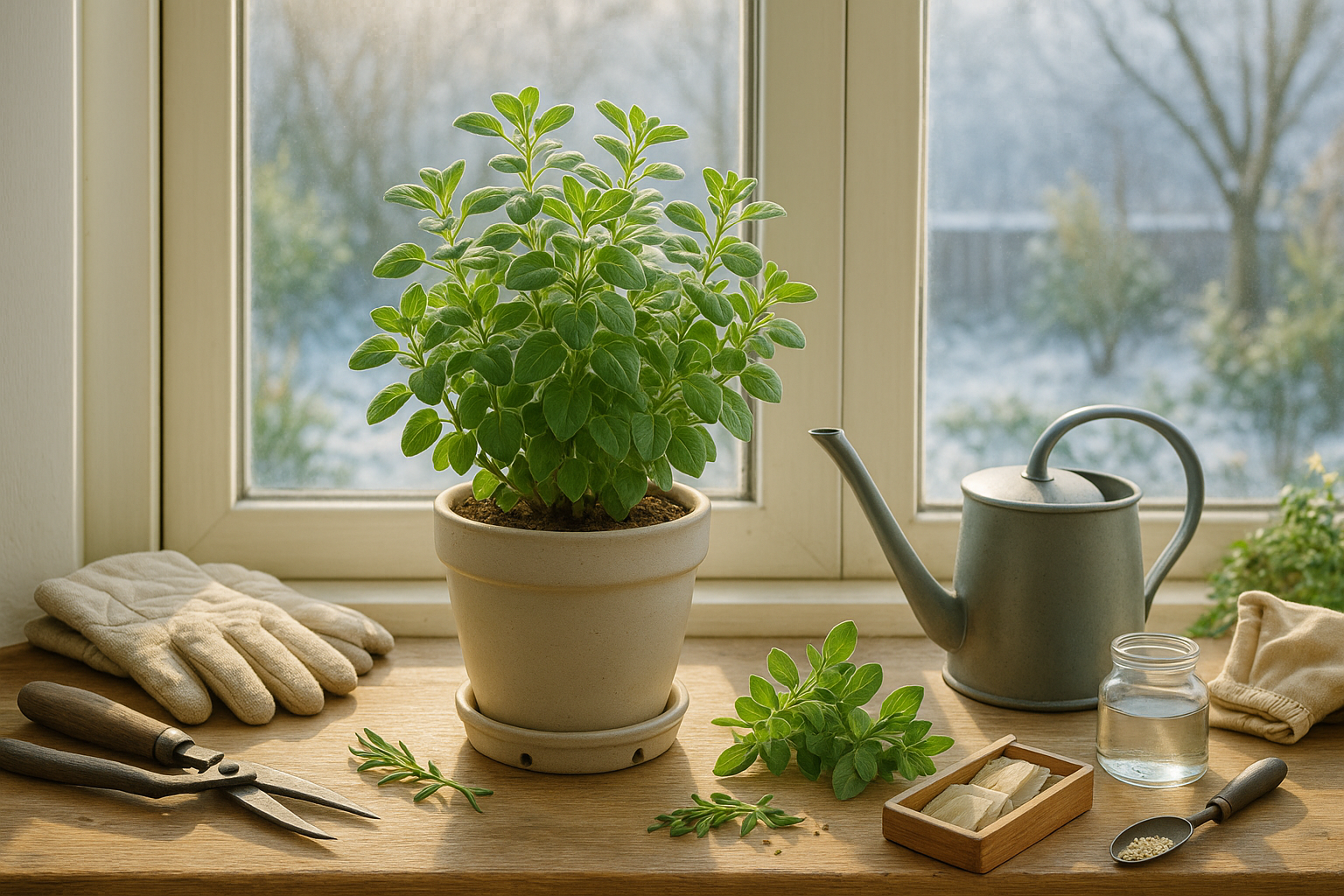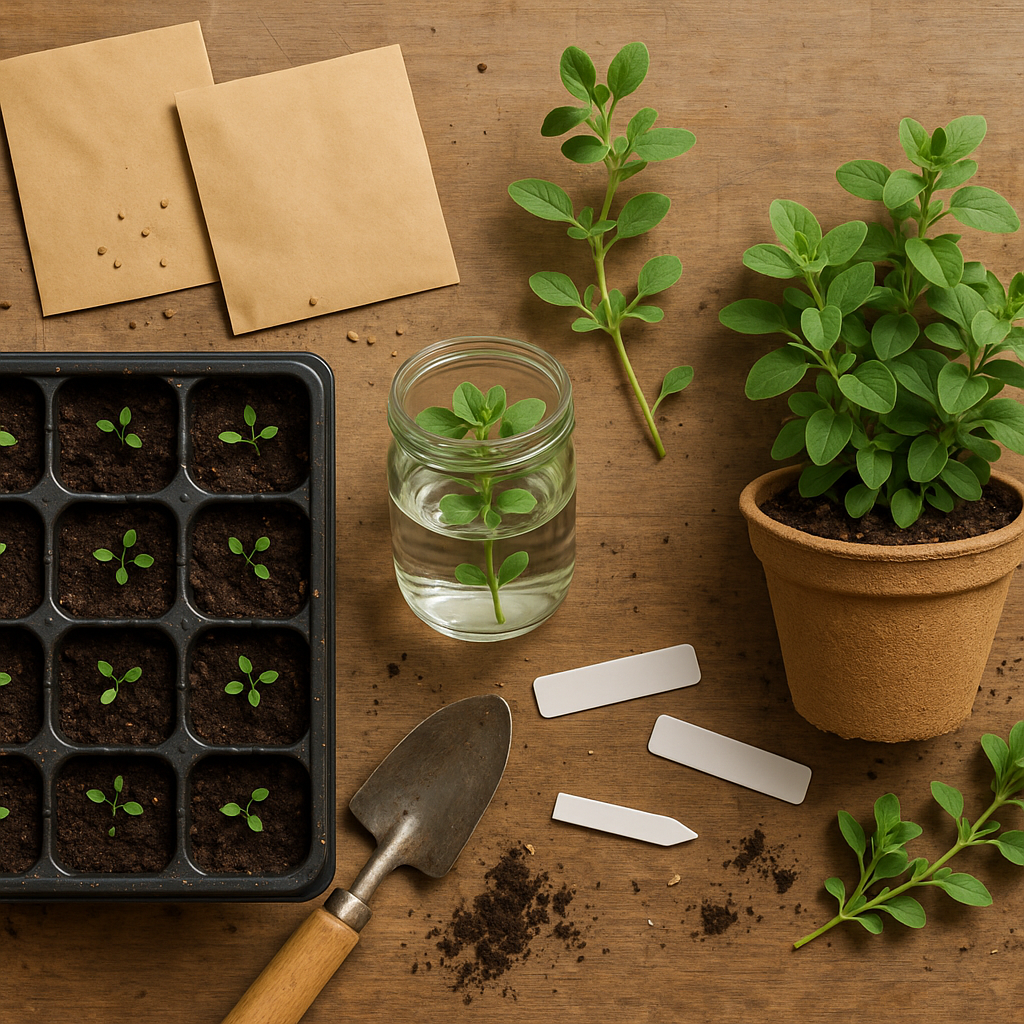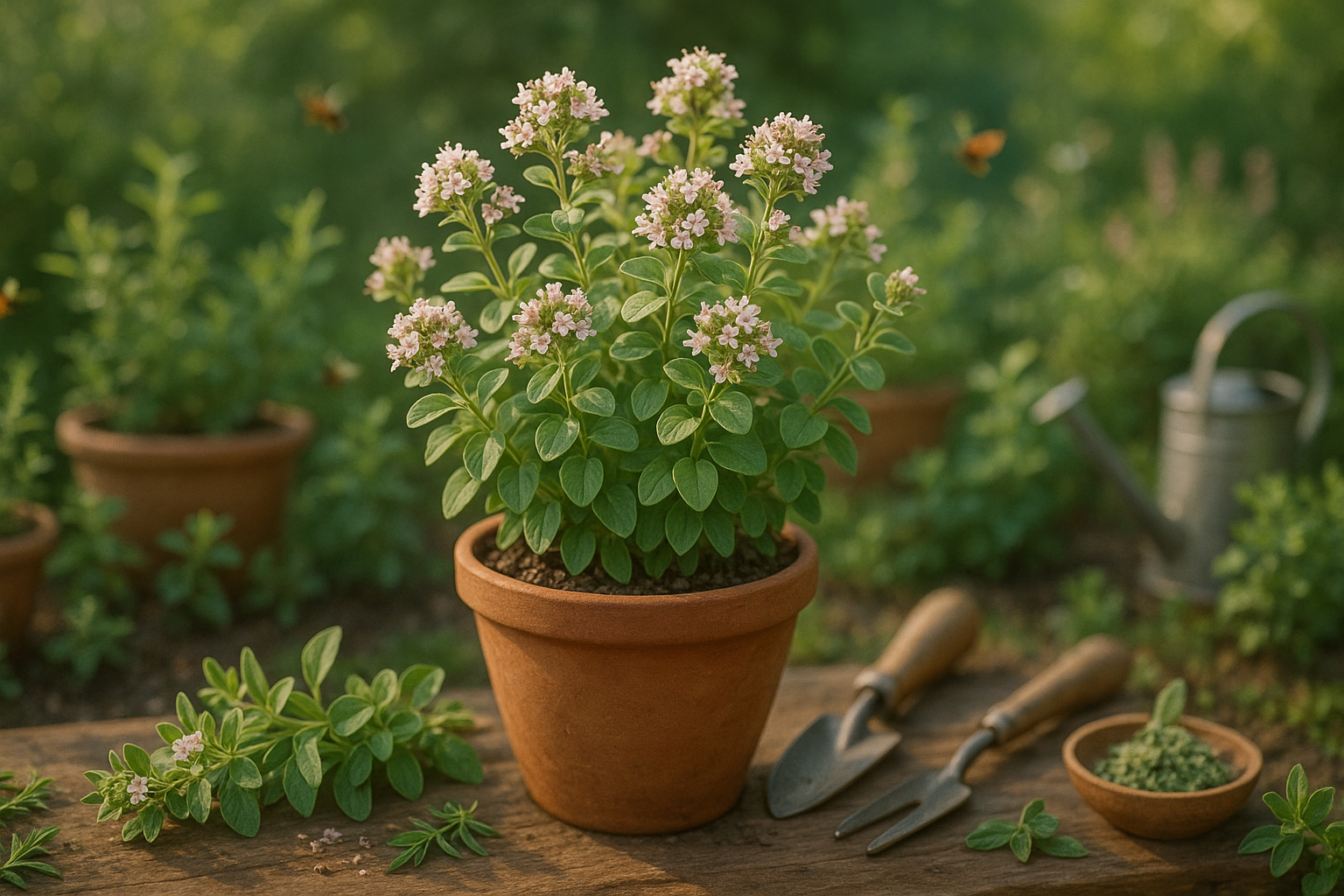Introducing Marjoram
Is marjoram perennial, or does it need to be replanted each year? If you’ve ever browsed the herb section at your local garden center and wondered how marjoram compares to oregano, you’re not alone. While they’re often confused, marjoram (Origanum majorana) stands out for its sweeter, milder flavor. Unlike the robust, peppery notes of oregano, marjoram has a subtle citrus and pine touch that works beautifully in salad dressings, roasted vegetables, or Mediterranean-inspired dishes. That versatility makes it a favorite among chefs and home cooks alike.
In the garden, marjoram’s delicate, oval-shaped leaves and tiny clusters of white or pale pink flowers bring both beauty and fragrance to your herb bed. It’s a magnet for pollinators, too, attracting bees and butterflies through midsummer. Home gardeners love marjoram not just for its gentle culinary kick but also for its soothing aroma and neat, compact growth habit. This herb is easy to grow, requiring little more than well-drained soil and plenty of sunlight—making it perfect for windowsill pots, border plantings, or container gardens.
One big reason marjoram stands out in home gardens is its versatility and visual appeal. Whether fresh or dried, its leaves add a fragrant punch to homemade spice blends, or you can use it as an edible garnish that doubles as a natural air freshener near outdoor seating areas. With minimal care, marjoram rewards you with lush greenery and useful herbs for months—making it an excellent choice for beginner and experienced gardeners alike.
Is Marjoram Perennial, Annual, or Both?

Marjoram is most commonly grown as a tender perennial, meaning it can live for more than one year, but only in climates with mild winters (usually USDA zones 9 and above). In colder regions, gardeners typically treat marjoram—especially the popular sweet marjoram (Origanum majorana)—as an annual since the plant can’t survive freezing temperatures.
Sweet marjoram is prized for its delicate, slightly sweet flavor, and it’s the variety you’ll most often find in home gardens and kitchens. If you live in a cooler zone and want to extend your marjoram harvest, consider growing it in pots or containers. This way, you can bring the plants indoors before the first frost—a sunny windowsill works well, provided the plant gets at least 6 hours of light per day.
Alternatively, take cuttings in late summer and propagate them indoors for a fresh start next season. Even if you grow marjoram as an annual, regular pinching and harvesting of the leaves encourages bushier growth and a longer supply of flavorful foliage. With a little planning, you can enjoy homegrown marjoram year-round, regardless of your climate.
Ideal Growing Conditions for Marjoram
Marjoram thrives best in full sun, so be sure to plant it where it will get at least six hours of direct sunlight each day—an east- or south-facing spot in your garden or on a bright balcony works well.
This fragrant herb prefers well-draining soil with a pH between 6.5 and 7.5; amend heavy clay soil with compost or sand to encourage better drainage, since marjoram’s roots are prone to rot in soggy conditions.
For container gardeners, select pots with drainage holes and use a high-quality, lightweight potting mix.
When it comes to watering, marjoram needs consistent moisture when young but is fairly drought-tolerant once established—let the top inch of soil dry out before watering again, and always avoid waterlogged soil.
For best growth, space marjoram plants about 10 inches apart to allow plenty of airflow, minimizing the risk of fungal diseases.
In the garden, marjoram thrives alongside vegetables like tomatoes, peppers, and beans, and can help deter certain pests from these plants.
However, poor drainage or overcrowding can lead to root rot and mildew, while too much shade can make the plant leggy and weak, attracting aphids or spider mites.
Always monitor for yellowing leaves or black spots—signs your marjoram may be suffering from poor conditions or pest issues.
Whether in a dedicated herb bed or a small kitchen pot, giving marjoram the right growing environment pays off with lush, flavorful harvests and minimal trouble from diseases or pests.
How to Plant Marjoram: Seeds, Cuttings, and Transplants

Growing marjoram is rewarding and flexible since you can start it from seeds, cuttings, or store-bought transplants.
Starting from Seeds
Sow seeds indoors about 6 to 8 weeks before your last spring frost. Sprinkle the seeds on top of seed-starting mix because they need light to germinate, and gently press them in without covering. Keep the soil moist and warm (around 70°F), and seedlings should emerge in 10 to 14 days.
Transplant the seedlings outside once all danger of frost has passed and the soil has warmed, spacing them about 12 inches apart in well-draining soil and full sun.
Propagation by Cuttings
Snip a healthy, non-flowering stem (about 4 inches long) in late spring or early summer. Strip the lower leaves and place the cutting in water or moist potting mix. Roots should form within two weeks. Once you see new growth, transfer the rooted cuttings outdoors after acclimating them in a sheltered spot for a few days.
Using Transplants
If convenience is key, you can buy young marjoram transplants from a nursery. When planting transplants, harden them off by setting them outside for a few hours each day over a week, gradually increasing their time outdoors before moving them permanently to the garden or a container.
General Tips
- Choose a sunny location.
- Ensure the soil drains well—marjoram dislikes soggy roots.
- The best time for planting and transplanting is late spring, after the threat of frost.
- Give your marjoram a gentle start and avoid overwatering.
Whichever method you choose, you’ll be snipping fragrant leaves for meals in no time.
Caring for Your Marjoram Plant
Keeping your marjoram plant thriving starts with a few easy, consistent habits. Water deeply but only when the top inch of soil feels dry—marjoram dislikes soggy roots, so good drainage is a must.
Feed your plant once a month with diluted organic liquid fertilizer to encourage lush, aromatic growth.
For a bushier plant, pinch back the growing tips every few weeks; this not only keeps your marjoram compact but also stimulates fresh leaf production.
Regularly snip off flowers as they appear to redirect the plant’s energy into leaf growth, which keeps flavors strong and the plant more productive.
Pests like aphids and spider mites sometimes visit marjoram; if you spot them, try a gentle spray of soapy water or introduce beneficial insects like ladybugs to control the problem naturally.
Watch for powdery mildew by providing good air circulation — space plants apart and avoid overhead watering whenever possible.
Throughout the growing season, harvest stems regularly; not only does this give you fresh herbs for cooking, but it also encourages your plant to stay full, healthy, and productive right up until fall.
Harvesting and Storing Marjoram
For the best flavor, harvest marjoram just as the plant begins to bud but before it fully blooms, typically in the morning after the dew has dried. Cut stems about 4–6 inches above the base, leaving enough growth for regrowth. Frequent harvesting encourages bushier plants.
To preserve the herb’s delicate aroma and taste, bundle small bunches and hang them in a warm, well-ventilated space out of direct sunlight. Alternatively, use a food dehydrator on the herb setting for faster drying. The leaves should crumble easily once fully dried, usually within seven to ten days.
After drying, carefully remove the leaves from the stems and store them whole in airtight glass jars or containers. Crushing the leaves only when needed helps retain the strongest flavor.
For short-term storage, fresh marjoram stems can be wrapped in a damp paper towel and kept in the refrigerator for up to a week. You can also freeze whole leaves or chopped marjoram in ice cube trays with a bit of water or olive oil for easy, mess-free portions to use over several months.
For the longest shelf life, store dried marjoram in a cool, dark place—spices last best when protected from heat and sunlight, with dried marjoram keeping its potency for up to a year. Remember to label all containers with the date for freshness, and use marjoram generously to liven up your favorite recipes year-round.
Culinary and Everyday Uses for Marjoram
Marjoram is a versatile herb that can effortlessly elevate everyday dishes and even enhance your wellness routine. In the kitchen, its mild, slightly sweet flavor makes it a wonderful addition to soups, stews, and sauces. Just sprinkle fresh or dried marjoram over chicken or beef before roasting, or stir it into vegetable soups for a fragrant twist.
It shines in salad dressings when blended with olive oil, lemon, and a pinch of salt, adding complexity without overpowering other flavors. For pasta or pizza night, try scattering fresh marjoram leaves over hot dishes right before serving to unlock their aromatic oils.
Beyond cooking, marjoram has hidden talents: brew it as a calming herbal tea to soothe digestion or promote relaxation after a long day. A few sprigs in a steam bowl can also fill a room with its gentle scent, making it a subtle option for aromatherapy.
Keeping a pot of fresh marjoram on your windowsill has practical perks—it’s easy to snip leaves as needed, ensuring you always have a burst of fresh, garden-to-table flavor ready for your next meal or self-care ritual.
